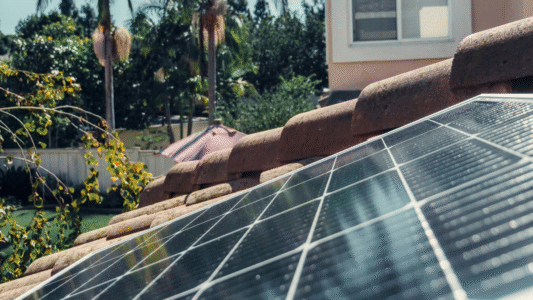India’s solar boom brings big wins but leaves key gaps
Author: PPD Team Date: 10/06/2025

India’s journey into solar energy began with ambition and urgency. Back in 2010, the National Solar Mission (NSM) was launched to reduce the country’s dependence on imported fossil fuels and build domestic energy security. With targets initially set at 20 GW of solar capacity by 2022, the scale grew rapidly. When the BJP government took charge in 2014, it raised the bar, aiming for 100 GW.
According to a 2025 policy brief from the Energy Studies Institute (ESI) at the National University of Singapore, India’s solar success story is real. Solar costs have dropped. Manufacturing has scaled up. Rooftop systems are widely accepted. But the report also outlines why solar alone will not be India’s silver bullet for decarbonisation.
Here is how the story unfolds.
Why solar made sense for India
India’s climate, vast land, and high energy demand make solar a natural choice. With falling solar PV (photovoltaic) prices and government support, solar energy began to compete with—and often beat—coal in terms of cost.
One key policy, the Renewable Purchase Obligation (RPO), pushed electricity distribution companies (DISCOMs) to include a set percentage of renewables in their supply. The idea was simple: if DISCOMs could not directly procure enough green power, they could buy Renewable Energy Certificates (RECs) to meet their targets.
The policy influenced sectors across the board—residential, commercial, and industrial. However, many states set low targets, and DISCOMs often settled for cheap RECs rather than building actual renewable capacity.
The rooftop solar experience: A tale of two states
Under the Electricity (Rights of Consumer) Rules, the government supported the Rooftop Solar (RTS) programme. It allowed households to become “prosumers”—both producers and consumers of electricity—using net metering and government subsidies.
Gujarat thrived under this policy. One of its villages even became the first to fully operate on solar during the day and battery storage at night. Tamil Nadu, despite having similar solar potential, saw much less uptake. The difference? Public hesitation and conservative investment behaviour.
Financial support made solar panels more accessible, while free maintenance helped build trust. But social, financial, and behavioural differences across states meant uneven results.
Falling prices, but shaky finances
The cost of solar power dropped significantly. Feed-in tariffs, competitive bidding, and long-term Power Purchase Agreements (PPAs) helped lower the levelised cost of energy (LCOE) for solar below that of coal.
To push adoption, Time of Day (ToD) tariffs were also introduced. These offered at least 20% lower rates during peak solar hours, encouraging consumers and DISCOMs alike to use more solar.
However, DISCOMs still face deep financial stress. Many are tied to outdated PPAs with thermal power plants that supply expensive electricity. For example, Maharashtra’s MSEDCL is locked into such contracts, making it hard to shift to cheaper solar even when the economics make sense.
India’s push to manufacture solar tech
India has long aimed to reduce its dependence on imported solar equipment. The government introduced a Production Linked Incentive (PLI) scheme for high-efficiency modules and imposed import duties—40% on solar modules and 25% on solar cells—to promote domestic manufacturing.
This led to new players like Adani New Industries entering the market. In 2024, Adani began commercial manufacturing of key solar components, including ingots and wafers, with a capacity of 2 GW.
While India is making progress in modules, it still imports most of its ingots, wafers, and cells. There is also a shortage of domestic modules as demand continues to outpace supply.
On the global front, India is benefiting from geopolitical shifts. With the US and Europe reducing solar imports from China, Indian exports are growing. However, this expansion into exports risks leaving local demand underserved unless manufacturing scales fast.
Off-grid solutions brought social change—but not for long
The NSM also focused on off-grid solutions to serve rural and remote areas. Programmes like the Deen Dayal Upadhyaya Gram Jyoti Yojana (DDUGJY) brought solar lighting and power packs to homes that were far from the national grid.
In many villages, people reported feeling safer and more connected. Schools, police stations, and public spaces installed solar lighting systems. Women and children, especially, benefitted from better night-time visibility.
But the gains were short-lived. Without regular maintenance or community engagement, many systems became defunct. Over time, people returned to using diesel generators, undoing much of the progress.
Transmission is the weakest link
The Green Energy Corridor (GEC) was introduced in 2012 to move renewable energy from production centres to demand hubs. But progress has been slow.
High Voltage Direct Current (HVDC) lines are needed for long-distance transmission. These projects take 3–5 years to complete, but renewable projects are often ready within 1–2 years. This mismatch causes bottlenecks.
The Leh-Kaithal corridor—a key transmission project—will only begin construction in 2026. The terrain is difficult, and the required permits and compensation procedures are lengthy.
In the meantime, renewable projects face delays and even curtailment due to grid instability. While national grid planning continues, stronger coordination with state utilities is needed to match RE deployment speeds.
What the future holds
India’s solar story is one of fast growth and bold policy. From domestic manufacturing to rural electrification, the benefits are clear. But the system has gaps—particularly in long-term planning, financial support for DISCOMs, grid infrastructure, and policy coherence.
To scale sustainably, India will need to:
Strengthen coordination between central and state agencies.
Monitor and maintain solar infrastructure after installation.
Incentivise innovation and early adoption beyond low RECs.
Expand domestic capacity for solar components.
Keep grid infrastructure aligned with generation growth.
Without stronger institutional reform and follow-up, solar’s potential could fade under the weight of its early success.
